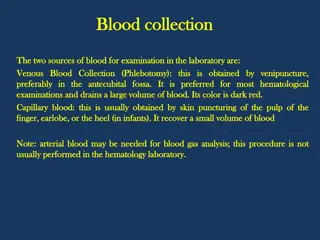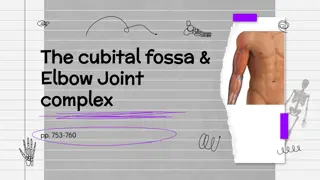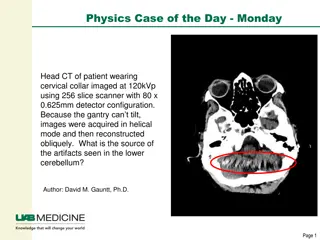The Popliteal Fossa
The popliteal fossa, a shallow depression at the back of the knee joint that serves as a passage for main vessels and nerves. Discover its boundaries, roof, floor, and contents like the popliteal artery, popliteal vein, tibial nerve, and common fibular nerve.
3 views • 9 slides
Discover the Fascinating World of the Fierce Fossa
Delve into the realm of the Fierce Fossa from Madagascar through this insightful report by Janelle Toebben. Learn about its appearance, behaviors, sounds, predators, and survival strategies. Explore the nocturnal habits, unique features, and challenges faced by this intriguing mammal.
0 views • 14 slides
Clinical Documentation Case Study: Posterior Fossa Syndrome and Mutism in Pediatric Patient
A case study of Kaye, a 3-year-old with a posterior fossa mass and obstructive hydrocephalus, highlights the importance of accurate clinical documentation. CDI queries to the physician clarified the distinction between posterior fossa mutism and syndrome, impacting coding accuracy and patient care o
4 views • 11 slides
Radiology Case Presentation: Differential Diagnosis of Large Posterior Fossa Mass in 25-Year-Old Male
25-year-old male with persistent headaches and neck pain presents with worsening symptoms. Differential diagnosis includes primary brain tumor, pyogenic abscess, pilocytic astrocytoma, medulloblastoma, and other possibilities. Neurocysticercosis, a parasitic disease caused by T. solium, endemic in c
0 views • 18 slides
Venous Blood Collection Methods and Equipment Overview
Venous blood collection techniques, including antecubital fossa and heel sticks, are commonly used for laboratory examinations. Venous blood is preferred for its large volume and ease of recovery. This article also explores the differences between capillary and venous blood samples in terms of compo
0 views • 8 slides
OSCE Suggested Answers May 2016
This presentation covers a series of OSCE case scenarios along with suggested answers. Topics include abdominal aortic aneurysm, purple urine bag syndrome, cystic lesions in the cranial fossa, opioid and anticholinergic overdoses, lung collapse, and more. Detailed solutions and management plans are
0 views • 11 slides
Understanding Trigeminal Neuralgia: Symptoms, Diagnosis, and Treatment Options
Trigeminal neuralgia, also known as "tic douloureux," is characterized by sudden, sharp facial pain that can be triggered by various factors. It predominantly affects middle-aged and elderly women. Diagnosis involves recognizing distinct pain patterns and ruling out other causes of facial pain. Trea
0 views • 15 slides
Ergonomic Measurement Guide for Proper Posture Setup
Learn how to measure seat height, armrest height, seat pan depth, desk height, screen height, keyboard and mouse height, buttock-popliteal length, popliteal height, knee height, elbow height, and eye height for optimal ergonomic setup. Helpful visuals and tips provided.
0 views • 25 slides
Understanding the Cubital Fossa and Elbow Joint Complex
This detailed guide covers the definition, boundaries, roof, floor, contents, and clinical importance of the cubital fossa. It also explores the surface anatomy and articulations of the elbow joint complex, highlighting stabilizing factors and common joint problems. Additionally, it delves into the
0 views • 18 slides
Understanding Artifact Sources in Head CT Imaging
Head CT images of a patient wearing a cervical collar show artifacts in the lower cerebellum caused by oblique reconstruction from helical scans due to the gantry's inability to tilt. Dental implants contribute to beam hardening streaks seen in the image, particularly evident in a sagittal view exte
0 views • 5 slides
Posterior Thigh Compartment and Popliteal Fossa Overview
Explore the boundaries, contents, muscles, blood supply, nerve supply, and structures of the posterior thigh compartment and popliteal fossa. Study the cutaneous innervation, sciatic nerve, popliteal artery, and detailed anatomy of this region through informative images and descriptions provided by
0 views • 16 slides










